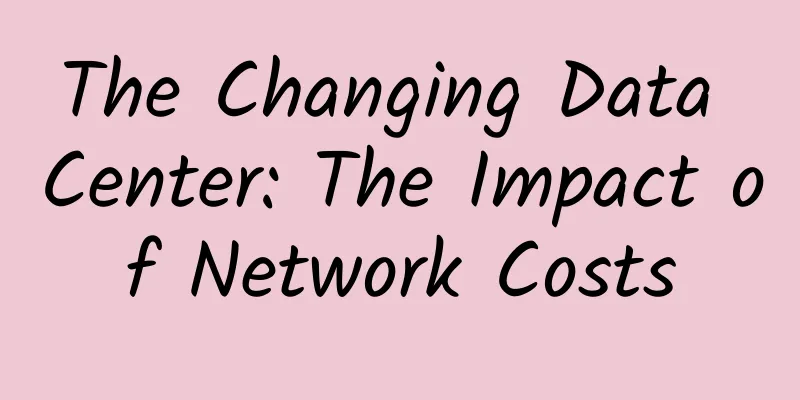Inventory: Excellent NaaS providers in 2021

|
NaaS, short for Network as a Service, is a service for network transmission connections that optimizes resource allocation by integrating network and computing capabilities as a unified whole. To put it simply, NaaS is a business model through which users can access network transmission services provided by third parties through the Internet, and the payment method adopted is often based on a subscription model. As early as five years ago, many of the hot NaaS startups have been acquired by large enterprises. However, NaaS is still an emerging market, and Cisco's entry may mark the transition of NaaS from early adoption to mainstream deployment. This article takes stock of the top NaaS providers in 2021. Aryaka SmartServicesAryaka provides managed network and security services based on SD-WAN and SASE architectures worldwide. Aryaka's SD-WAN-as-a-Service product enables enterprises to consume network services through its cloud-first network infrastructure. Core advantages:
Perimeter 81Perimeter 81's NaaS service integrates network management and security into local and cloud-based resources such as AWS, Salesforce, Azure and Google Cloud. This cloud-native NaaS includes a range of security tools for authentication, Wi-Fi security, zero trust, DNS filtering and breach prevention. By placing network resources closer to where they are needed, it helps reduce network latency. Core advantages:
Cloudflare Magic WANCloudflare Magic WAN replaces traditional WAN architectures with Cloudflare's network, providing global connectivity, cloud-based security, performance, and control through a single interface. It can securely connect any traffic source, including data centers, offices, devices, and cloud properties, to Cloudflare's network. Users can configure public and private routing policies to send traffic where it needs to go. Core advantages:
Cisco Plus NaaSIt’s no surprise that Cisco is aiming to be a leader in NaaS. After all, Cisco has dominated the networking space for decades. Its Cisco Plus brand encompasses a variety of cross-architecture solutions designed to deliver services. Cisco Plus NaaS includes intelligence from AI-driven visibility and automation to drive performance and cost optimization. For example, Cisco Plus Hybrid Cloud provides data center network, computing and storage technologies in a consumption model. Cisco has only recently launched this platform and it is still in its early stages, but it has already attracted the attention of competitors. Core advantages:
Akamai Aura Managed CDNAkamai specializes in content delivery networks (CDN). Akamai provides a highly distributed server platform that responds directly to end-user requests for web content. It acts as an intermediary between content servers and end-users or clients. Akamai Aura Managed CDN is the SaaS version of the company's flagship CDN solution. Managed CDN services include users providing video streaming services and optimizing their network content delivery while reducing deployment time and upfront costs. Core advantages:
Megaport MCRMegaport Cloud Router (MCR) provides virtual routing capabilities for on-demand private connectivity at Layer 3, which is pre-configured in data centers in key routing regions around the world to enable data transfer. Without the need for physical infrastructure, users can take advantage of cloud-to-cloud networking, private peering between cloud providers. Core advantages:
Amdocs NaaSAmdocs' programmable NaaS automates and orchestrates the design, ordering and management of network services. The company is focused on providing SD-WAN services to MSPs rather than directly to enterprises. Core advantages:
Palo Alto PrismaPalo Alto Networks Prisma helps simplify management, supports application-defined SD-WAN policies, and delivers secure SD-WAN to branch offices via the cloud. It combines SD-WAN technology acquired from CloudGenix with Palo Alto's expertise in networking and security. Use cases include router modernization, cloud migration, and network operations automation. Core advantages:
Original link: https://www.enterprisenetworkingplanet.com/data-center/top-naas-providers-of-2021/ |
<<: Why does TCP use three-way handshake? Can't two or four-way handshakes work?
>>: A Simple Explanation of Decentralized Applications
Recommend
OlinkCloud: San Jose dedicated server 60% off monthly payment starting at $71.4, triple-network AS9929 line
Olink.Cloud is a site under the old host company ...
Knowledge literacy in the 5G era: Understanding the Internet of Things
What is IoT The Internet of Things (IoT) is abbre...
5G acceleration is inseparable from the coordination of software and hardware and industrial integration.
Faced with the sudden outbreak of the COVID-19 pa...
Is there still a market for pure 4G mobile phones?
According to a report by China Business News, Hua...
HTTP/3 Principles and Practices
After the HTTP/2 standard was published in 2015, ...
Unveiling the "veil" of smart courts, the old look is transformed by 5G applications
In a society ruled by law, it is normal to go to ...
Wi-Fi 6 no longer needs to wait and see: the "four no's" that previously hindered its popularization
Although Wi-Fi 6 wireless technology has been aro...
Regarding the 6G satellite, I am "confused"
[[351012]] On November 6, a satellite named "...
Popular Science on 5G Technology and Standards You Must Know
In 2017, the application of 5G technology has bec...
Six tips for optimizing network security vendor integration
As the network security situation becomes increas...
my country's backbone network construction will be initially completed in 2020
According to the latest report released by the In...
Let’s talk about edge computing from another perspective: the power supply pressure and computing power ratio are not high, is it over-hyped?
Edge computing has become increasingly popular in...
Donghua IDC comprehensive operation management system
IDC——Innate Investment Gene As social division of...
A large wave of policies is coming, what are you waiting for, IoT people!
On April 23, General Secretary Xi Jinping emphasi...
Point2 launches 5G RangeXtender to increase network fronthaul and backhaul range
Point2 Technology said its 5G RangeXtender allows...









